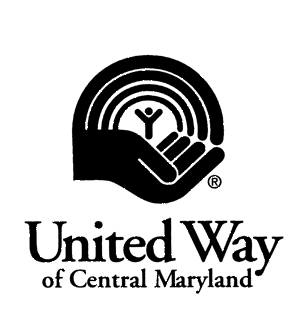|
|
United Way Campaign Aims at $1.7 MillionDonations will target four areas of critical need in this region
By Greg Rienzi |

 Samuel J. Seymour says he will fulfill his responsibilities
as chair of the Applied Physics
Laboratory's United Way campaign with a newfound appreciation
of what the United Way can do.
Samuel J. Seymour says he will fulfill his responsibilities
as chair of the Applied Physics
Laboratory's United Way campaign with a newfound appreciation
of what the United Way can do.
That's because Seymour, business coordinator of APL, says that last fall he got a firsthand glimpse of the health and human services agency at work.
When his elderly mother became ill, there were suggestions made about her moving into a nursing home. His mother, however, decided she would rather stay home, and for the next six-month period she received home health care from a variety of United Way-affiliated agencies, such as Meals On Wheels.
 |
| Samuel Seymour |
"Some people really dislike the thought of having to go to a nursing home, and it's really great when someone can come to your home and help take care of things. This was a significant benefit to her," Seymour says. "Most of us don't realize that at some time in our lives our family will need the assistance of a United Way agency. These things can happen to any of us. My mother and I found out just how valuable the community safety net is that the United Way provides."
The university will officially begin its 1999 campaign for the United Way of Central Maryland this month, with a kickoff event on the Homewood campus, at noon on Sept. 23 in Shriver Hall.
The campaign's three chairs--Seymour, for APL; Audrey Smith, vice president for human resources, for the university; and Harold E. Fox, professor and director of the Department of Gynecology and Obstetrics at the School of Medicine, for Johns Hopkins Medicine--have set a combined Hopkins goal of nearly $1.7 million. This figure represents a total for contributions from Johns Hopkins Medicine and all university divisions except the Nitze School of Advanced International Studies. Money raised at SAIS is reported to the Washington capital area campaign.
 |
| Harold Fox |
Last year's combined Hopkins gifts to the United Way of Central Maryland totaled $1,657,231, making Hopkins one of the region's top five contributors. This year Hopkins has raised its sights to $1,684,000.
"The problems face us not only where we work but where we live," says Audrey Smith. "Most people do not realize that 40 percent of the faculty and staff members who work at Johns Hopkins live in Baltimore City."
Events scheduled for the six-week campaign include a Day of Caring at the Port Discovery children's museum, Sept. 29; an Oldies But Goodies Dance, at 5 p.m., Nov. 5, in the Glass Pavilion of Levering Hall at Homewood; and several lottery drawings, throughout the campaign, for those employees returning pledges or contributions of $35 or more.
 |
| Audrey Smith |
The Days of Caring are events in which staff and faculty can get directly involved with a local community service.
"The Days of Caring are key activities we engage in to help familiarize our staff with the needs of the community and [those] where they can learn just how valuable their financial contribution is," Seymour says. This year, the staff at APL alone will participate in more than 50 Days of Caring activities.
The money raised by the 1999 United Way campaign will support more than 250 health and human services programs serving 1.7 million people in central Maryland. The theme of this year's central Maryland campaign is "Be Someone's Hero." Financial gifts not earmarked for a specific program or agency will be divided among four main target areas: Investing in Children and Youth, Building the Work Force, Strengthening Families and Responding to Crisis.
Contributing to the United Way is a way to make a difference in the community, says Harold E. Fox, adding that financial contributions also indirectly assist Hopkins endeavors. He points out that last year the Fund for Johns Hopkins Medicine received $8.7 million in grants from 20 United Way agencies.
"This money supports investigation that is happening in the basic clinical sciences. It comes back home to the campus to support our research mission," Fox says.
This campaign goal of nearly $1.7 million, if reached, would be a record amount for Hopkins institutions. But Seymour says he wouldn't be content to stop there.
"I would really like to see us reach $2 million this year," he says. "Now that would really be something."
| GO TO SEPTEMBER 7, 1999 TABLE OF CONTENTS. |
| GO TO THE GAZETTE HOMEPAGE. |